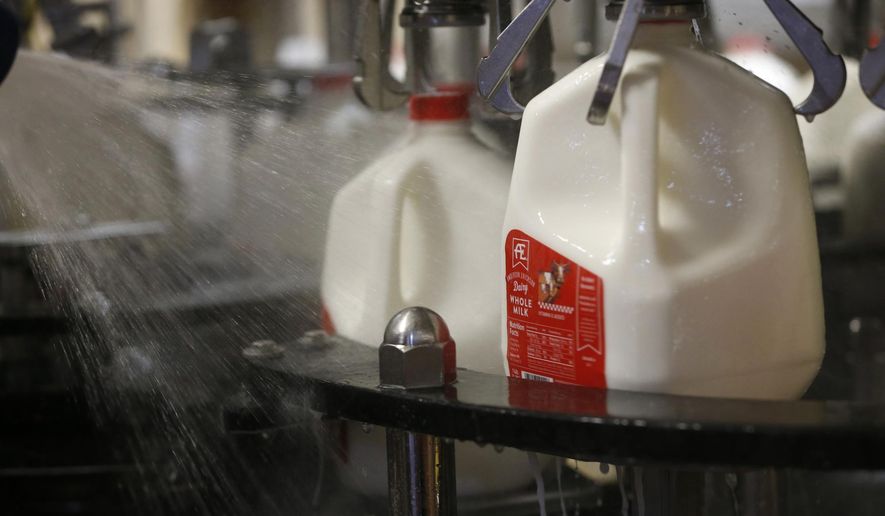House lawmakers approved legislation that would allow whole milk to be served to public school students for the first time since 2012, when it was labeled unhealthy by the Obama administration and banned from public school cafeterias.
The legislation, which passed in a bipartisan 330-99 vote, would allow schools funded by the national school lunch program to resume serving 2% and whole milk, including flavored milk. These more fattening kinds of milk were eliminated more than a decade ago under first lady Michelle Obama’s Healthy, Hunger-Free Kids Act, which aimed to make school lunches more nutritious by lowering fat content and adding fruits and vegetables.
The House bill, which now heads to the Senate, would restore whole milk, which lawmakers said has been deemed more nutritious and a better option for children, who tend to reject low-fat milk over the taste and instead turn to sugary or caffeinated drinks.
The legislation would allow schools to continue to offer low-fat or plant-based options.
Republicans framed the debate around parental choice and the benefits of the added nutrition in whole milk.
They argued the milk industry has been under attack by the Biden administration, which has presided over a 15% increase in the price of milk. Democrats also endorse a Green New Deal that seeks to eliminate cows because their gas contains methane, the GOP said.
“Let’s end the war on milk,” House Education and the Workforce Chairwoman Virginia Foxx, North Carolina Republican, said.
It was cut from school lunch menus following efforts by Mrs. Obama and federal health officials who determined it was fattening and contributed to childhood obesity. Newer research shows that higher-fat milk is associated with lower obesity rates in children and has other health benefits.
“The federal bureaucracy should never stand in between your children and a nutritious lunch,” Ms. Foxx said.
Democrats argued the measure would defy current federal dietary guidelines and would discriminate against minorities, including Blacks, Hispanics and Native Americans, who are more lactose intolerant and can’t drink milk.
Rep. Troy Carter, Louisiana Democrat, said the federal government should not add whole milk to the school lunch menu, but instead reimburse public schools that serve plant-based milk, such as soy milk, which would provide a nutritious drink to the many students who throw out school milk because they are lactose intolerant.
“This is an issue of racial and ethnic inclusion,” Mr. Carter said.
Rep. Bobby Scott, of Virginia, who is the top Democrat on the Educating panel, said the bill undermines the Biden administration’s efforts to strengthen school lunch meals.
“Fat-free milk and low-fat milk are the healthiest options for children,” he said. “If anybody has studies or research to the contrary, they should submit it to the experts in the normal process, rather than through politicians.”
Dairy groups lobbied in favor of the measure and said it would help end food waste in public schools.
“Kids take more milk, and drink more milk, in school when they have options they like,” National Milk Producers Federation President and CEO Jim Mulhern said.
Mrs. Obama unveiled the new standards at a public elementary school in Alexandria, Virginia as a way to add fresh vegetables and baked foods to student lunches in place of fried, sugary and starchy meals but the new mandate often resulted in less palatable lunches that got tossed in the trash.
Mrs. Obama sent her daughters to a private school not subject to the federal school lunch rules.
“Replacing whole milk with skim milk,” Mrs. Obama said at the time “are [among] changes that add up over time and it can make a real difference in the life of our kids.”
The Trump administration reversed the Obama-era ban on low-fat flavored milk but the Biden administration is weighing eliminating it once again.
The House bill would ensure flavored milk can remain on the school lunch menu.
• Susan Ferrechio can be reached at sferrechio@washingtontimes.com.




Please read our comment policy before commenting.